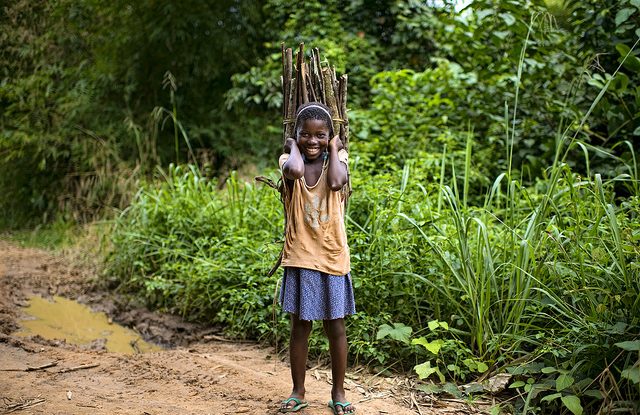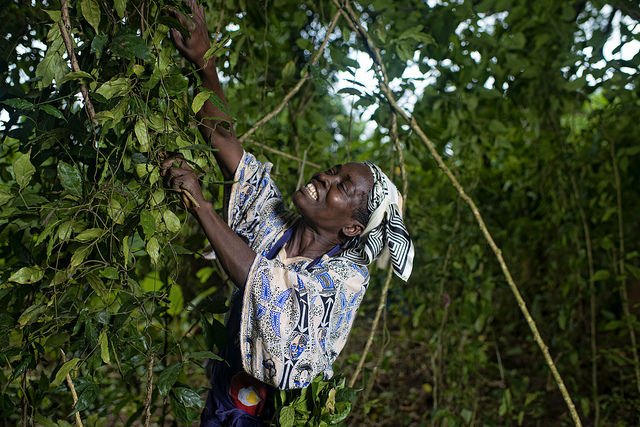
During the first term of the U.S. leadership of the newly created Congo Basin Forest Partnership (CBFP) from 2003 to 2005, the foundations were set for the institution to play an important role in the management of forests and natural resources in Central Africa.
Established by U.S. Secretary of State Colin Powell in Johannesburg in 2002, the CBFP has worked for more than a decade to create strong institutions and policies in Central Africa in order to address climate change impacts and threats to biodiversity.
The focus during America’s second term leading the CBFP from 2013 to 2015 was to address governance challenges, emerging threats and strategic new alliances amid a shifting global agenda.
Global concerns and agreements are continuing to shape the management of natural resources in Central Africa. This includes the move from the Millennium Development Goals (MDGs) to the Sustainable Development Goals (SDGs), the landmark United Nations Framework Convention on Climate Change in Paris, and the realization of the Aichi Declaration of the Convention on Biological Diversity.
It is in such a context that the U.S.-led CBFP provided objectives in March 2013 to support: 1) clear and concerted African leadership, 2) actions to address critical threats to biodiversity and forests, 3) full participation in efforts to adapt to and combat climate change, and 4) effective institutions, regulatory regimes and governance to address forests and wildlife.
The July 2015 CBFP Conference of Partners in Yaoundé was an opportunity to revisit these objectives and looked to the future of sustainable forest and natural resources management in Central Africa.
Academic success
In order to enhance leadership in Central Africa, one achievement has been the creation of the CBFP Academic Consortium, a network that links international universities (mainly American, but poised to grow quickly) to local universities and other institutions in the region, with the goal to support research and capacity building. This move supports the Network of Environmental and Forest Training Institutions in Central Africa (RIFEEAC), which has been a critical platform under the management of the late Dr. Ibrahim Sambo.
A recent CIFOR study shows that youth at the local level are often not consulted during governance planning and decision-making processes. In addition, African leadership needs to broaden its considerations beyond biodiversity conservation to consider the recently agreed upon SDGs.
For the past two years, CIFOR has continued capacity building in post-conflict context through the Master’s and Ph.D. programs to elevate research institutions and universities in the Democratic Republic of Congo (DRC). During this time, the University of California, Los Angeles completed an important milestone by creating the Congo Basin Institute (CBI) housed at the International Institute of Tropical Agriculture in Yaoundé-Cameroon. The CBI will train Africans and Americans in multidisciplinary research and offer access to world-class facilities. To consolidate the region’s research agenda, CIFOR has started to bring together the Research institutions that will need to work closely with RIFEEAC.
With the aim of capacity building, the academic consortium is expected to increase its focus beyond biodiversity conservation and to recruit academic institutions from Europe and Asia. The post-conflict research and university support process initiated by CIFOR in DRC needs to be extended to the Central African Republic, and the consideration given to youth at the regional level needs to be expanded to the national and sub-national levels.
A recent CIFOR study shows that youth at the local level are often not consulted during governance planning and decision-making processes. In addition, African leadership needs to broaden its considerations beyond biodiversity conservation to consider the recently agreed upon SDGs.
Looming large
Overcoming threats to biodiversity and forests is the primary aim of the CBFP. In addition to the well-established threats from agriculture and poaching, illegal trans-boundary wildlife trafficking is linked to other security issues, and has emerged as a compelling new threat. Moving beyond the traditional protected areas network, the U.S. is supporting the extension of the Wildlife Enforcement Network (WCN) from the horn of Africa to the heart of the continent.
The region hosted an international conference on the illegal exploitation and trade in African Wildlife in Brazzaville where these issues were discussed with leaders from across the continent. The idea of trust funds was presented during the 15th CBFP conference of partners in Yaoundé as a potential option to sustain biodiversity conservation. And, CIFOR continues to support research findings on bushmeat, moving the problem from a wildlife conservation issue to one of food security in order to assure protein for local communities living within forest landscapes. Conflict and post conflict situations prevailing in certain parts of the heart of Africa will continue to fuel the threats to biodiversity and forests.
We must find solutions to these crises. Increasing research attention on zoonosis such as Ebola needs to happen. Sustaining the livelihoods of smallholders living in forest landscapes also needs to be part of the solution to protecting biodiversity and forests.
Expanding the scope of the CBFP
Since the first U.S. facilitation of the CBFP in the early 2000s, attention to climate change has increased. In 2009, through the Global Climate Change initiative, the U.S. signaled its interest in helping African countries prepare for extreme weather and climate events, develop clean and affordable systems and reduce deforestation in the Congo Basin and elsewhere in Africa.
Since President Barack Obama’s objective of reducing deforestation dovetailed with biodiversity protection, the U.S. has been supporting the Central Africa Regional Program for the Environment (CARPE) as well as the Central African Satellite Forest Observatory (OSFAC) as vehicles to address the Reducing Emissions from Deforestation and Forest Degradation (REDD+) agenda in the region. Assessing and protecting forest habitats and resources have thus gained more importance in the CARPE and OSFAC initiatives.
REDD+ responses in the region have hence been mainly on some pilot projects but also on MRV (Monitoring Reporting and Verification) process. CIFOR established the first GHG (Green House Gaze) lab in Central Africa. Partners of the CBFP Support countries of COMIFAC in developing their INDC (Intended Nationally Determined Contribution) in the perspective of UNFCCC COP 21of Paris. Adaptation to climate change did not meet the same donor attention as REDD+. Nevertheless, adaptation is now part of the 10 years convergence plan of COMIFAC.
Focusing on institutional effectiveness has resulted in the revitalization of key groups within the Central Africa Forests Commission (COMIFAC). New private sector and agricultural institutions have joined the CBFP since 2013, and the ten-year convergence plan (2015-2025) has been published. The State of the Forest Report 2013 was published with key findings on emerging threats, and a specialized state of the forest report on protected areas was released in 2015.
The emphasis on highlighting local leaders is an innovation that all partners can benefit from, and will hopefully strengthen the coordination and resolve of the Conference on Dense and Humid Forest Ecosystems of Central Africa (CEFDHAC) to continue to play a key role in local governance of forest resources.
Expecting that CBFP will continue to strengthen COMIFAC and its constituencies (including its technical groups and platforms), it is hoped that coverage will be expanded to topics such as livelihoods, agriculture, capacity building, water and energy in the forest landscapes of Central Africa.
In July 2015, when the announcement was made regarding the transition of CBFP’s leadership to the European Union (EU), it was clear that the second term of U.S. facilitation spurred new actions and pathways.
In 2016, the EU have the challenge of defining a new road map for the CBFP, which is eagerly awaited by all partners.
We want you to share Forests News content, which is licensed under Creative Commons Attribution-NonCommercial-ShareAlike 4.0 International (CC BY-NC-SA 4.0). This means you are free to redistribute our material for non-commercial purposes. All we ask is that you give Forests News appropriate credit and link to the original Forests News content, indicate if changes were made, and distribute your contributions under the same Creative Commons license. You must notify Forests News if you repost, reprint or reuse our materials by contacting forestsnews@cifor-icraf.org.

